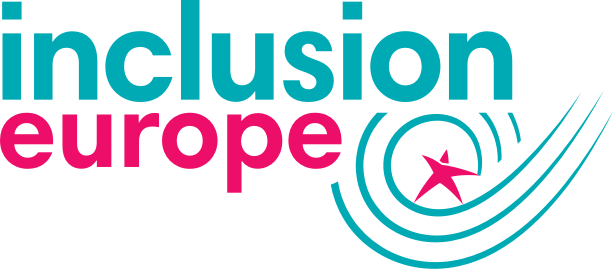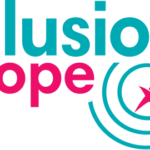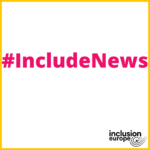
What is the European Accessibility Act?
The European Accessibility Act is a directive that ensures the accessibility of a number of services and products within Member States. In order to do so, the directive aims to improve the trade of accessible products and services between Members Sates, leading to more accessible products and services in the market, and with more affordable prices.
How will the European Accessibility Act improve the lives of people with intellectual disabilities?
The European Accessibility Act covers products and services that have been identified as being most important for persons with disabilities while being most likely to have diverging accessibility requirements across EU countries.
The Commission consulted stakeholders and experts on accessibility and took into account the obligations deriving from the UN convention on persons with disabilities. These products and services include:
- computers and operating systems
- ATMs, ticketing and check-in machines
- smartphones
- TV equipment related to digital television services
- telephony services and related equipment
- access to audio-visual media services such as television broadcast and related consumer equipment
- services related to air, bus, rail and waterborne passenger transport
- banking services
- e-books
- e-commerce
The European Accessibility Act is expected to be beneficial also for businesses. The need for new accessible products will create new possibilities for them, and the elimination of barriers betweem Member States is going to create a bigger, united market focused on accessibility. It will be easier for European companies to operate in another EU country, thanks to the common rules on accessibility.
Where does the European Accessibility Act come from?
On 2 December 2015, the European Commission published a proposal for a European Accessibility Act. Since the proposal, the European Disability Forum has been campaigning in favour of the directive and its approval.
The European Accessibility Act has been finally approved by the European Parliament on 13 March 2019. It has been the first legislation on this matter in the European Union.
By the 28 of June 2022, European member states need to adopt and publish all necessary laws, regulations and administrative processes to comply with the European Accessibility Act.
Inclusion Europe has been actively promoting the approval of the European Accessibility Act, taking part in campaigns organised by the European Disability Forum, and publishing a position paper on the topic.
The Accessibility Act is a law
made by the European Union.
Every country in the European Union
must respect the Accessibility Act.
The Accessibility Act says what companies need to do
to make their products and services more accessible.
For example:
- smartphones,
- computers,
- e-books,
- ticketing machines
- travels by bus or train.
The Accessibility Act is good for people with disabilities
and also for older people.
It is good because it makes things more accessible
to them.
It is also good for people with disabilities looking for a job.
It can get them a job in testing products and services
to say if they are accessible.
The Accessibility Act is also good for companies.
They do not need to follow different laws in different countries anymore.
Now there is one law for the entire European Union.
This makes things easier for companies.
While European member states are currently transposing the European Accessibility Act, good practices are emerging across Europe:
- The European Disability Forum (EDF) has created a European Accessibility Act peer support group to facilitate peer exchange and support among EDF members, accessibility experts and disability advocates who are working on the transposition of the European Accessibility Act. Through this group members can exchange information and ideas, and contact and support one another through the transpositions process. Additionally, EDF has published a European Accessibility Act Toolkit for transposition, which offers disability advocates tools and proposals to push for strong national legislation and adequate implementation complying with the European Accessibility Act. Moreover, EDF made a list with 10 Web Accessibility Rules.
- Inclusion Europe has developed a checklist that takes event organisers through the steps of ensuring the accessibility of online events.
- The Austria Presse Agentur, created the “TopEasy” service, a service lead by persons with and without intellectual disabilities, which translates daily news and official documents into easy-to-read language. This way information becomes accessible to people with intellectual disabilities and increases their participation in society. You can find more information here.
- Funka from Sweden has developed a methodology and indicators to test websites on e-accessibility and to help increase the level on web-accessibility. As part of that, Funka has also conducted a study on assessing and promoting e-accessibility in Europe in collaboration with Empirica from Germany and WRC from Ireland who have conducted research on Telecom and TV. You can find the report here. In collaboration with Stockholm University, Swedish Standards Institute and the National Agency for Special Needs Education and Schools, Funka also developed Criteria for Cognitive Accessibility of Digital Interfaces.
- The European Telecommunications Standards Institute has developed Accessibility requirements for ICT products and services. The document covers a wide range of requirements for different ICT solutions. It is relevant for all organizations who buy, develop or manufacture ICT products or services.
- In the Spanish region of Extremadura, a public office for cognitive accessibility, OACEX, was established in 2017 in collaboration with Plena inclusión Extremadura. OACEX has workers with and without intellectual disabilities verifying cognitive accessibility of official documents from the region. They adapt documents in easy-to-read, evaluate cognitive accessibility in public spaces, give training on easy-to-read, and promote research and awareness-raising on cognitive accessibility. This is an example of public-private collaboration to increase the accessibility of information.





